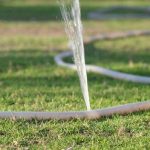Water Concerns Within Our Transport System
The two main public transport systems in Dubai are its metro system, which is one of the most advanced in the world, and its bus network. With the metro’s two main lines of Red and Green, this state of the art, driverless, rapid train network system is in a league of its own. Part of the lines run underground and in other parts of the city they run along elevated viaducts. With carriages designated for different customers, such as gold card customers and ‘women and children’ only carriages, the trains cater for all needs and are comfortable and clean. The carriages are Wi-fi enabled, air conditioned, monitored by thousands of CCTV cameras and are managed by a designated Metro Police.
The bus system in Dubai is also just as modern and state of the art, with air-conditioned bus stops and comfortable buses which connect all areas of Dubai, particularly the tourist hotspots.
For both of these public transport systems, there are multiple train and bus stations situated around Dubai which are modern and sophisticated, as you would expect from this rich, glamorous country. However, as with all buildings and structures, there is a common denominator that can cause devastating damage — water. Whilst this is a precious natural resource, its escape from controlled water systems is not only a waste but can cause extensive damage and pose health risks.
Within all of the stations there are two or three key areas which could be exposed to water damage. Any leaking water within the station itself, whether that is through damaged roofs or leaking pipes, could cause functionality problems. Water within the electrical escalator and lift systems will result in them failing, thereby preventing customers from being able to move around the station safely and causing delays to the daily functioning of the networks. Financially, this could amount to tens of thousands of pounds in allowing for repairs and replacement systems.
For health and safety purposes, all stations – both bus and train – will have fire line pipes installed and other facilities to be used in the event of a fire. There will be fire hydrants and hose reels both in the buildings themselves and on the platforms, but they will also be present in the metro tunnels. In addition, there will be sprinkler and water mist systems to be utilised overhead within the buildings. All of these facilities, from the hose reels to the pipeline networks, have the potential to leak. This will not only cause structural and electrical damage but also risk the firefighting equipment failing to function when urgently required, or working with reduced pressure, potentially failing to control or put out any fire hazard. Being able to suppress a fire swiftly in a confined space, such as an underground platform, subway or metro tunnel will be of vital importance. In addition, more and more sprinkler and mist systems are being introduced into stations which also work on a water pipe system which can leak. At peak times there will be hundreds of people and dousing them in water in this way would be more effective than just attempting to evacuate everybody or only using hose reels and hydrants.
Therefore, it is paramount that the station’s buildings and other associated areas mentioned above are regularly monitored for leaking water. Not only is it a precious natural resource that should not be wasted and should be conserved as much as possible, but the safety and financial implications for leaking water and the damage caused could be huge. However, it is also acknowledged that identifying leaks in these enormous vast complex water systems, or finding an inlet where water is accessing the building, is almost impossible. This is where LeakDtech can assist—an experienced, professional team, who are passionate about water conservation and helping to keep Dubai’s properties safe. Using infrared, thermal imaging, or other state of the art technology, whole buildings and systems can be inspected, particularly those installed underground or in tunnels, with the ability to identify any leaking water. The inspection will not only confirm whether there is a water problem but will also pinpoint its exact location, allowing for swift remedial repair. Not only will you benefit from avoiding the potential financial burden of suffering water damage, but you will be playing your part in the world’s battle to conserve water.




